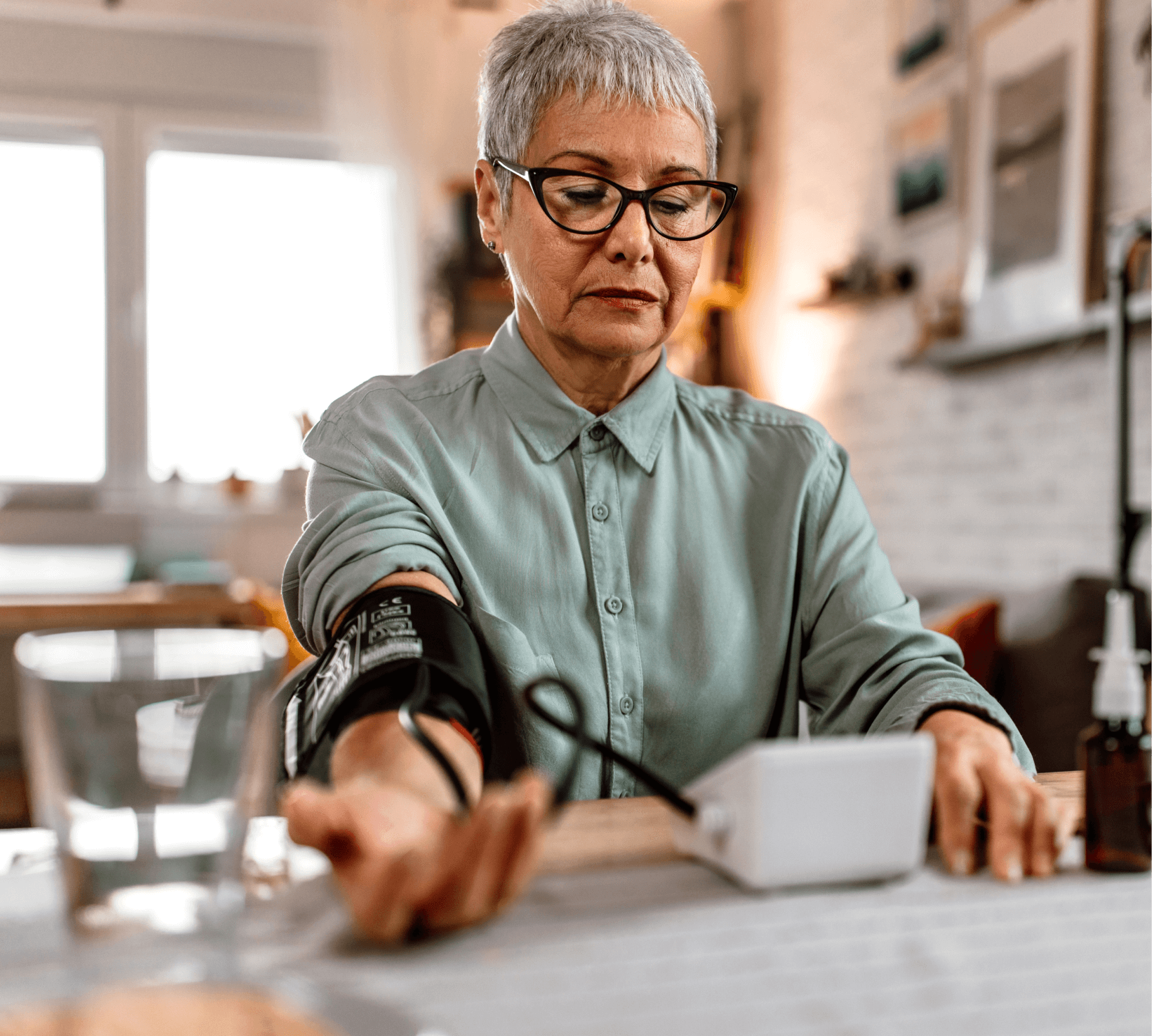
Track vitals with patient-friendly remote patient monitoring devices.
Expand care outside the four walls.
Request A ConsultationTestimonials
“With our patient population, we knew that cellular devices would be the easiest for them to use, and the easier they are to use, the higher our patient adherence will be.”
—Melonie B. Practice Manager“RPM is doing its job. We’ve had several patients who are at critical levels with their blood pressure, but now that we’re monitoring them daily, we’ve caught when their readings are elevated and have quickly prescribed medication and kept them out of the ER.”
—Kimberly N. Practice ManagerIntegrate smart connected devices into your remote patient monitoring platform.
Monitoring devices for patients are data collectors. These RPM devices sync all vital measurements to your RPM software. Readings may initiate alerts, which care team members monitor. With this data exchange occurring continuously, you have access to more information about the patient’s chronic disease, enabling you to adjust treatment or intervene before incidents requiring emergency care.
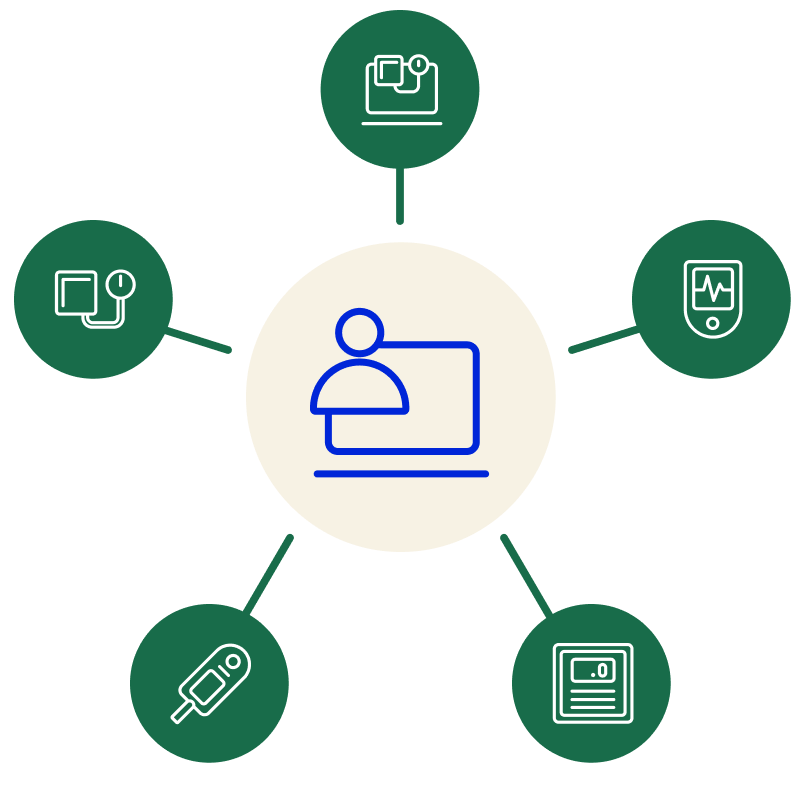
Use devices with cellular connectivity for more stability and reliability.
Connected medical devices can connect to the internet in several ways, and some are more reliable than others. The remote patient monitoring devices we provide use a cellular network.
A cellular network supports more devices across a network, leverages the higher speed of 5G, and offers enhanced security features. Cellular connectivity allows for data collection from devices to occur in real time and be available for review. It’s more stable and reliable than Bluetooth connections, which must have uninterrupted Wi-Fi access.
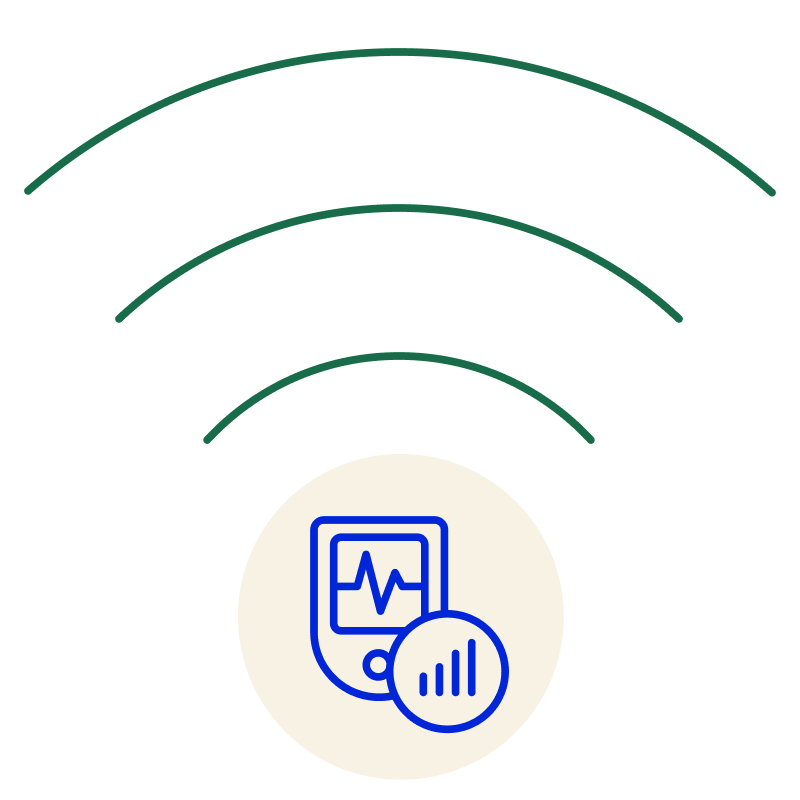
Collect patient data securely and effectively.
Continuous health monitoring devices send valuable data to your RPM platform. Information can include blood pressure, glucose levels, weight, pulse, temperature, and more. Each reading flows into the patient’s profile in graph form, with alerts triggered based on thresholds you set. Data transfer occurs via the internet and adheres to all security and compliance requirements relating to patient data.

Deliver preventative care with connected device monitoring.
If you’ve ever wished you could be present in your patient’s lives every day to ensure they adhere to treatment, connected devices give you that knowledge. All the measurements of vitals sync automatically to your RPM software. Those readings can initiate alerts, which care team members monitor. With this data exchange occurring continuously, you expand the information you have on a patient’s chronic disease. Then, you can make adjustments to treatment or intervene before incidents requiring emergency care happen.
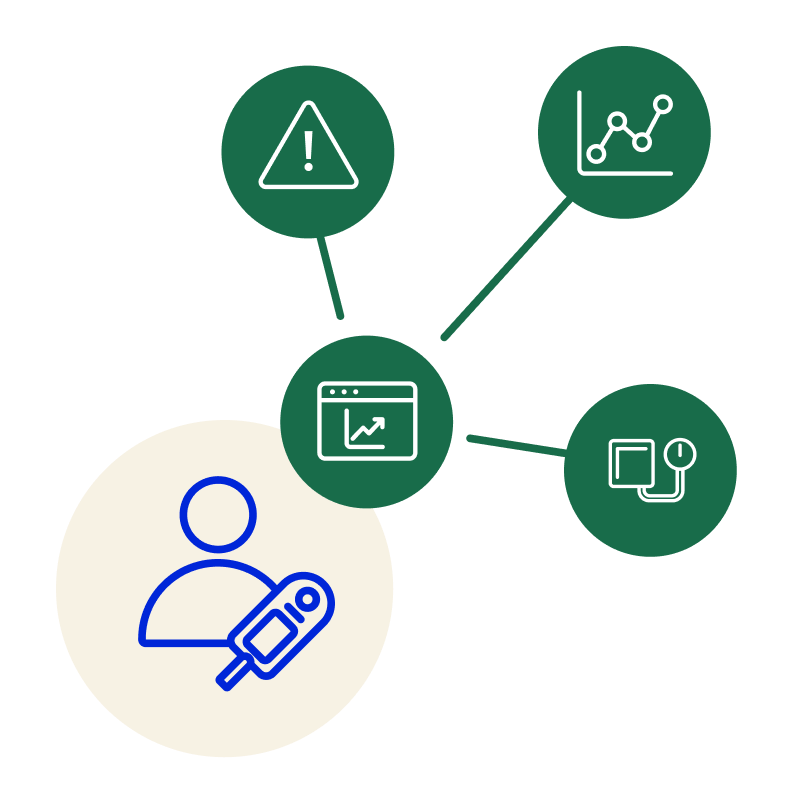
FAQs about connected remote patient monitoring devices
-
What are remote patient monitoring devices?
Connected devices fall into the medical equipment category. They are regulated by the FDA (Food and Drug Administration). These devices work by connecting to the internet and transmitting data. Devices can be handheld, implanted, standalone, or wearable sensors.
-
What types of remote patient monitoring devices are available?
Medical devices align with chronic diseases that need monitoring. The most common include:
- Blood pressure monitors.
- Blood glucose trackers.
- Weight scales.
- Pulse oximeters.
- Cardiac monitor.
- Spirometer.
-
Are connected devices safe, secure, and compliant?
All devices we provide are FDA-approved. The agency has many protocols to ensure they are safe to use. Additionally, manufacturers must have provisions in place for data security to mitigate the risk that’s inherent with internet-connected devices. The security guidelines also adhere to HIPAA compliance mandates.
Once devices are on your network, data encryption, cybersecurity best practices, compliance, and privacy regulations remain a priority.
-
What’s the difference between cellular connectivity and Bluetooth?
Cellular connectivity and Bluetooth are the most common ways to connect devices online. If using a cellular network, there’s no need for a smartphone, which is a Bluetooth requirement.
Connecting via Bluetooth can also be cumbersome for patients because they need to “pair” the device and their phone. Reliable and uninterrupted internet access is a requirement for Bluetooth, while cellular has broader coverage and is the easiest to set up. The device is ready right out of the box. -
How does ordering remote patient monitoring devices work at Optimize Health?
Once you implement our RPM software, you will work with our implementation experts to order the relevant FDA-compliant connected devices. We can deliver them directly to patient homes. After training and implementation, data begins to transmit from the devices to your RPM platform. Your program for remote care is ready, with accurate and reliable data at your fingertips.
Ensure your RPM program is a complete solution.
A remote care program requires many tools, with connected remote patient monitoring devices playing a pivotal role. They are the source of data that flows into your remote patient monitoring software. As part of the complete solution from Optimize Health, we provide the devices and the support needed to implement them.
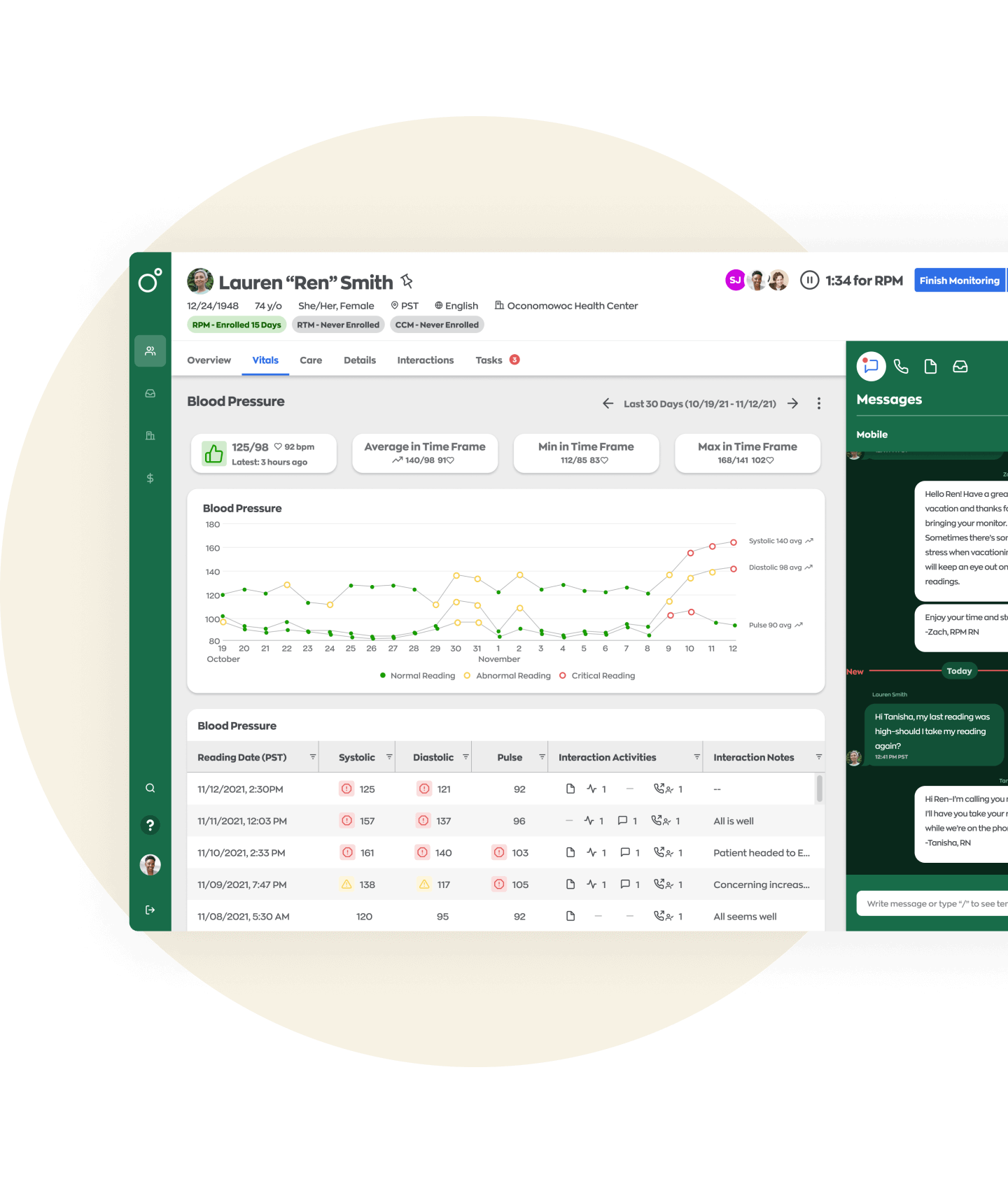
Achieve better patient outcomes with connected medical devices and RPM with Optimize Health.
